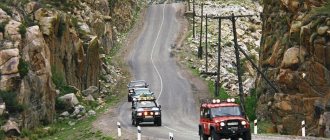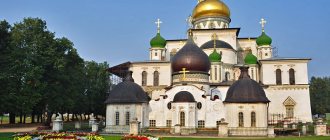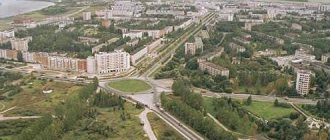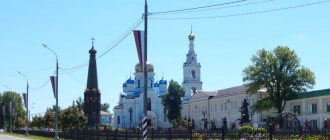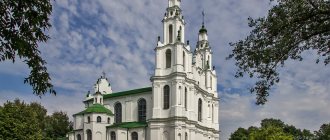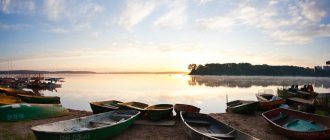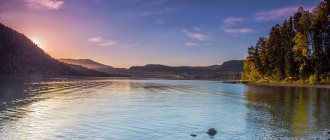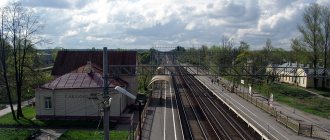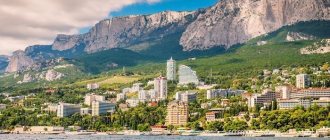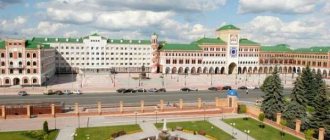A visit to Chemal and the attractions in the area is recommended for anyone traveling to Altai for the first time. Here you can see picturesque valleys, mountain ranges, blue lakes and waterfalls. All attractions are located in close proximity, so you don't have to book excursions on all-terrain vehicles.
Chemal is a regional center and a large village in the Altai Republic.
How to get to Chemal
The road route to Chemal begins in Novosibirsk, Barnaul or Gorno-Altaisk. From these cities the famous Chuisky tract leads to the village (route P256 Novosibirsk - border with Mongolia). In the area of the village of Ust-Sema, you need to turn from Chuysky onto the Chemalsky tract (the Ust-Sema - Chemal - Kuyus highway). The distance from Ust-Sema to the resort is 37 km, from Gorno-Altaisk – 89 km.
The village can be reached by intercity bus from Biysk, Barnaul or Novosibirsk. Two routes depart from Novosibirsk daily (morning and night), travel time is 9 hours 30 minutes. Departure point is Avtovokzal metro station in Novosibirsk.
4 flights depart from Barnaul every day: morning at 07:40, afternoon at 13:45 and 14:40, night at 02:15. Travel time is from 6 hours 05 minutes to 6 hours 40 minutes.
From Biysk (Altai Territory), in addition to ongoing flights from Barnaul, 2 flights depart daily: at 10:30 and 15:05. Travel time is from 3 hours 45 minutes to 5 hours 20 minutes, depending on intermediate stops.
All buses heading to the resort make a stop at the Gorno-Altaisk bus station, so no additional routes are organized from the capital of the republic.
Meaning
These petroglyphs are one of the most ancient sights of Chemal, along with drawings of animals in Kalbak-Tash, which are in many ways similar to those discovered here. Many drawings, for example, fantastic beasts, which incorporate the characteristics of a wide variety of living creatures, date back to the Bronze Age.
Many petroglyphs were made using dot contour techniques. One of the animals combines the features of an elk and a bull, such ideas are characteristic of the Bronze Age. Each figure depicted here is directed to the right, towards a schematic representation of a creature similar to a woman.
People of that era portrayed women extremely rarely. There is a drawing similar to this image in the rock above the grotto. According to researchers, these images illustrate a female shaman in the process of performing a ritual, who once worked in this area. Some people believe that this is the image of the mother-ancestor.
It is obvious that the grotto in the Kuyus area has been sacred to many nomadic tribes for thousands of years. During excavations around it, several cultural layers were revealed at once. At the very bottom, flint tools from the Neolithic era were discovered, in the middle, ceramic fragments of tools were discovered, and closer to the surface - fragments of ceramics and iron tools - chisels and coins.
Climate and weather in Chemal
Chemal gained its popularity not only for the beauty of the surrounding nature, but also thanks to the surprisingly mild microclimate characteristic of the valley. The average annual temperature in Chemal is +4.4 °C - this is approximately the level of Kazan and Veliky Novgorod. For example, in neighboring Gorno-Altaisk the average annual temperature is +2.8 °C, in Barnaul – +2.6 °C, in Kemerovo – +1.3 °C. In addition, the weather here is very often sunny - the number of cloudy days per year does not exceed 42. And the third factor influencing the microclimate of the resort is the low wind speed: in December and January it is 2 m/s, and in other months it is almost completely calm. So the valley is dominated by calm, sunny weather with much higher temperatures than in the surrounding cities and towns of Southern Siberia.
Despite all the delights of the local climate, Chemal is still characterized by seasonality. All four seasons are pronounced: the average temperature in January in the village is -10.9 °C, in July - +18.9 °C. Climatic spring sets in in March, and by April all the snow melts away. Winter begins in November, when permanent snow cover sets in. The average annual air humidity is about 70%; in April and May it does not exceed 60%. The amount of precipitation during the year is 525 mm, the most precipitation falls in July - 105 mm.
Mystic
The history of the hydroelectric power station itself is shrouded in mystical stories. One of them talks about an outrageous incident that occurred here in 1935. Then, in honor of the launch of the facility, the prisoner who worked here was given the order to create an image of I. Stalin for his arrival here. The imprisoned artist painted a beautiful portrait, meeting the deadline, but got into a fight with the prison warden over something, and he was beaten with particular cruelty. The tormented prisoner, angry over the entire situation, spat on the image of Stalin, and his prison term was extended. The leader of the people did not appear at the opening of the station, but his image was hung in the hydroelectric station office. Soon, eerie eyewitness accounts began to appear about the ghost of the leader, who began to appear in the dark corridors of the station. In the evenings, the smell of tobacco from a pipe wafted through here, despite the fact that workers, for safety reasons, never smoked in these places. The appearance of the ghost terrified the employees until the flood at the station, which destroyed the portrait of the leader. Since then, the mysterious ghost has never appeared here.
When is the best time to go
Now Chemal is a year-round resort, so the choice of time for a trip depends on the goals being pursued. In winter, tourists come here for snowmobile rides and dog sled rides. Many vacationers visit the resort in March to welcome spring, which comes here much earlier than anywhere else in Southern Siberia. By the end of March - beginning of April, all the snow in the valley melts, and the temperature can rise to +20 °C.
The most suitable period for walks in the surrounding mountains, waterfalls and lakes is from June to October. In June – August, mountain rivers and lakes warm up, so seasoned tourists can swim in them. In September and October, the time of golden autumn comes, which is especially beautiful here.
The main secret of the burial ground
Among the graves, where almost all women were found, there is one mysterious mound. A warrior in full equipment was found in it, interred with a war horse. A dagger, arrowheads, a harness, and tools were found on him. The gender could not be determined, but the paradox is that the cemetery was for women, which means it is probably a curious burial of an Amazon.
The mounds were created around 4-3 centuries BC. Judging by the burial mound chains, full of similar grave goods, these burials belonged to two close families, forming a family cemetery. The burials were carried out from the north to the south, following each other.
Population
The usual population of Chemal is a little over 4 thousand people; in general, the rural settlement of Chemal with its subordinate settlements is 4,500 inhabitants. However, during the tourist season it increases many times thanks to the tourists who come here. The vast majority of local residents are Russians and Altaians by nationality.
Geographical position
The village of Chemal is located in the northwestern part of the Altai Mountains. Mountain Altai is the heart of Asia. The semi-deserts of Mongolia, the Siberian taiga and the Kazakh steppes converge here. And this is a land of beautiful nature. The village, as if on purpose, contains everything a traveler needs: a clean river, beautiful mountains, taiga. It lies on the right bank of the Katun, at the confluence of the Chemal River. At the same time, there is an excellent road leading to the settlement, and there are many places for comfortable accommodation. From the capital of the Altai Republic, Gorno-Altaisk, to Chemal is about 100 km along the highway, 61 km in a straight line. The terrain of the area is mountainous. But since the settlement stretches along the river bank, there are no large differences in elevation. Chemal lies in a valley and is surrounded by mountains of medium height, some of which are accessible for hiking.
Where to stay in Chemal
The choice of places to stay in Chemal is really great. In this sense, the village differs little from other Russian resorts in its accommodation facilities.
- Standard 2-3 star hotels. The advantages include complete landscaping, heating in winter and air conditioning in summer, a bathhouse in the yard and even a swimming pool. Cost – from 1000 RUB per day.
- Rooms in poorly equipped hotels or small houses. This is the most common type of housing in Chemal. Facilities are located on site, and hot water is often heated in tanks in the sun. Bathhouse - for a fee. The cost of accommodation in such hotels is from 500 RUB per day.
- Cottages and houses for rent - 2-3 room houses with full amenities and good repairs. The cost of such housing usually starts from 9,000 RUB per day.
- The private sector is the most diverse type of housing in Chemal. Presented from granny-type rooms and summer houses to quite decent dachas. Facilities are usually located in the courtyard; residents are allowed to use a summer kitchen and shower. Cost – from 400 RUB.
Burials
Here, next to ancient rock paintings and a river, about 20 burials of extreme antiquity were discovered. They date back to early Scythian times. It is important to know that you can see these places in Chemal only for a fee, but it is quite small.
These burial grounds, along with the nearby burials near the Edigan River, have a number of features. Memorial ring fences were discovered. There are a lot of female burials here. Earrings, plaques, hairpins and mirrors made of bronze were found next to them. At that time, these were real luxury items, which speaks in favor of the high status of the women discovered here.
What and where to eat
As the main tourist center of Altai, Chemal is not at all deprived of places where you can eat delicious food. The entire Chemalsky tract is literally dotted with restaurants, cafes and eateries for every taste and budget. In the village itself, the concentration of food places reaches its climax. In addition to the usual Russian, Asian and European cuisines in tourist places, tourists in Chemal are given a rare opportunity to try the traditional cuisine of the Altai people.
The most common Altai dish is kocho soup, prepared from meat on the bone with the addition of pearl barley flour. Another traditional Oromo dish is the local variety of manti. It is also recommended to try kan blood sausage, local salty kurut cheese, kaymak sour cream and boorsogi (puffs without filling). For lovers of especially exotic dishes, it will be interesting to try salted tea with milk and talkan (pearl barley).
From more traditional cuisine, 3 of the most popular Altai products can be noted. First of all, this is the famous Altai honey, secondly - pine nuts, presented in an assortment from ordinary unshelled nuts to nut halva. Well, the apotheosis of local cuisine - dishes made from maral meat, red deer meat bred by the Altai people. Venison dishes are quite expensive, so cafes and restaurants usually prepare them by pre-order. Alternatively, you can purchase venison in the form of sausages and dried pieces in bulk.
Blue Lakes
Near the Katunya River, near the village of Askat, there is a beautiful chain of clear lakes. There are 3 of them and they are very ancient. These reservoirs are open to the public only from August to April. For the rest of the time they are flooded with Katun water. In winter, their surface becomes crystal clear. Water circulates from one body of water to another, eventually flowing into the Katun. Many springs feed on them. They got their name from their amazing turquoise color. In the smallest of the lakes, you can dive near a huge stone block that goes under water to a depth of 2 meters. The greatest depth of these lakes is 8 meters.
This is a real paradise for travelers, because every weekend a frame bathhouse is heated on an island in the middle of the lakes. Here you can swim in the lakes and bask, enjoying the indescribable beauty of the sunset distances of the Altai Mountains, breathing fresh air and drinking herbal teas with aromatic field herbs. The bathhouse is connected to the lake by a small staircase. It is booked at the Katun base.
Transport
The village of Chemal itself is quite large, so moving around on foot is not so easy. The vast majority of vacationers come here by private car, but there are also many “horseless” tourists. 3 bus routes are designed to help such vacationers, all of them start from the “GES” stop south of the village itself:
- No. 1 goes to the “Konechnaya” stop in the north of the village, the length of the route is 23 km;
- No. 2 runs to the Tursib stop in the settlement of Tourbaza Katun, length - 45 km;
- No. 3 is the longest route, the final stop of which is “Ust-Sema” in the village of the same name, the total length is more than 78 km.
The second way to get around the resort and surrounding area is by taxi. There are many taxi services in Chemal, and there are even more private cab drivers. Another option is to bring your own or rent a bicycle from the hotel. With its help, you can easily explore the immediate surroundings of the village. But you still can’t get to remote places without a car trip. Exotic means of transportation, more like a tourist attraction, include horseback riding and dog sledding.
Ancient monuments
Many sights of Chemal have survived to this day from ancient times. Antique objects that are more than 8 thousand years old are open for inspection here. One of the local ancient monuments that is recommended to see in Chemal and the surrounding area first of all is the Kuyus Grotto. It is located a few kilometers from the village of Kuyus, right next to the Katun River. There is a large accumulation of petroglyphs, ancient rock carvings. Many of them are visible right from the road. One of such clusters is the Kuyus Grotto.
Here, by the hands of ancient people, deer, elk, goats, fantastic predators, half-beasts, half-humans are depicted. They were created back in the Bronze Age, millennia BC. There are also more ancient rock art, painted in the Neolithic era, that is, 8 thousand years ago. The oldest is a drawing of a deer, 1.5 meters high, made with a stone tool. The images look realistic, which makes them unique. Drawings of that time could rarely boast of such realism as those presented in these places.
Sights of Chemal
The main attractions of Chemal are associated with its surrounding nature, primarily the Katun and Chemal rivers. They have different characters and even the color of their water is different. If the Chemal is a turbulent narrow river with clear water, then the waters of the Katun are distinguished by an unusual turquoise color. At the confluence of two rivers, the waters of the Chemal appear dark against the background of the bright turquoise waters of the Katun; for a long time they do not even mix and flow downstream separately.
Another natural attraction of the resort is the island of Patmos, which received its name in honor of its Greek namesake because of the Church of St. John the Evangelist that was once located here. It was on Patmos in the Aegean Sea that the prophecy of the Apocalypse was once revealed to John the Theologian. The only way to Altai Patmos is by cable cars stretched over the mouth of the Katun. On the island itself there is now a replica of the burnt church. Now on the island there is a monastery of the Barnaul Znamensky Monastery, but the nuns themselves do not live on Patmos, but on the shore.
The main man-made attraction of Chemal is the hydroelectric power station located at the confluence of two rivers south of the village. The local hydroelectric power station was built in the 30s, but now its power is not enough for the expanded village. To enter the power plant you need to pay 450 RUB; here you can see the unique mechanisms of the 30s that still provide electricity. For passage through the territory of the power plant to the confluence of the Katun and Chemal, a fee of 100 RUB is also charged, but this can be avoided if you bypass the hydroelectric station along a mountain path along the river bank.
Mount Camel
A recognizable tourist place in the Chemal region of the Altai Republic. This mountain is included in popular tourist routes due to its close location to the main attractions of the surrounding area.
It got its name because of the shape of the ridge, which resembles the back of a Bactrian camel. The path to the top starts from the microdistrict of the same name. The path is well trodden here and can be seen from afar. Therefore, even without excursions it is easy to find it on your own. However, to climb to the very top, you will have to work hard: the climb up the steep slope is quite difficult. It can be difficult for an unprepared tourist to get to the very top. The path from the foot of the mountain to the top takes about an hour for people with good physical fitness. And the reward is a delightful view of the surrounding area and the mountain landscape for which Altai is so famous. The Katun River Valley is in full view from here. Other natural monuments and beautiful tourist places are also visible.
The highest point is located at an altitude of 927 meters above sea level (the right “hump” of the Camel, the southern ridge). The elevation difference from the starting point of the trail to the very top is more than 400 meters. The tourist route leads precisely to this part of the mountain: there is little forest here, so a wider and more bewitching view opens up. At the very top is the Russian flag. For many who climbed here, a photograph with him is like a sign of victory over the rigors of such a difficult path.
The route to the top of the mountain is only popular from spring to late autumn, as long as there is no snow. In winter, snow cover makes these steep slopes slippery and inaccessible.
This mountain is ranked among the iconic natural monuments of the Altai Republic.
Tips for tourists
Although Chemal is the object of the most civilized tourism in Altai, certain safety measures must still be observed when walking in the vicinity of Chemal. Shoes should be comfortable, well-worn in and suitable for mountain hiking. It is better to wear clothes made from natural materials, as synthetic fabrics are not as comfortable and can tear.
In spring and early summer, it is highly recommended not to go into tall grass. There are snakes in the vicinity of the village, but the most terrible enemy, as in all of Siberia, is ticks that carry tick-borne encephalitis and Lyme disease.
Most vacationers dream of swimming in the turquoise waters of local rivers. However, you need to remember that even on the hottest days the water temperature does not rise above +14 °C. So swimming is only available to seasoned tourists, while others are better off contenting themselves with hotel pools.
Chemal is often called the gateway to Altai, since it is usually from here that tourists begin their acquaintance with Altai. Chemal can boast of an optimal combination of local beauty, accessible location and relatively low prices.
Castles of mountain spirits
The most important attraction of Chemal and Altai are the unique rocks near the Karakol lakes. These mountain ranges resemble ancient castles, which is why they were named that way. However, there were terrible stories here. So, in 1960, a team of scientists was sent here, to the mountain spirits. She studied the reliefs of the picturesque area. After some time, the group did not contact. Search operations were organized, during which the bodies of scientists were discovered under the mountains. Research conducted here has revealed dangerous ultrasonic waves. Then the government blew up the mountain range, leaving only stones that resembled castles. It is prohibited to take anything with you from these territories - stones, flowers, pieces of earth. According to local beliefs, this will disturb the mountain spirits, who will come for revenge.
Features of the holiday
The village of Chemal is a dead-end part of the highway with a well-developed infrastructure. Then you can only go on foot or ride on special equipment, and there are very few places to stay. Why do people go to Chemal? To relax in the fresh air, walk in beautiful places, climb mountains, even if they are not high. It is not for nothing that the village is considered a balneological mountain-climatic resort; here the air itself is considered healing. Therefore, first of all, you need to walk and breathe. But tourists are offered a wide range of entertainment and excursion services. Looking at the photo of Chemal (Altai Mountains), it’s hard to believe that this is not Switzerland or Austria, but Russia, the mountains and valleys here are so beautiful. This place allows you to combine several types of tourism at once: ecological, active, educational and health-improving.
Things to do
Only at first glance, a holiday on Chemal (Altai Mountains) may seem monotonous. In fact, leisure activities for tourists are very well organized here. But the first thing you need to do is walk: along rivers, in the mountains, around the village. There are a lot of beautiful places here, there are so many views of the Katun that you could take a whole photo album. You need to walk and breathe. After this, you can visit the main attractions: the state district power station and the monastery on the island of Patmos. And after that you can indulge in other entertainments, of which there are many. These include horseback riding in the summer and snowmobiling in the winter, an amusement park with a Ferris wheel, a water park, and many prize-winning attractions: crossbow shooting, Kalashnikov assault rifle shooting, and darts.
For more advanced shooting enthusiasts, there is the Aitau shooting club in Chemal with professional stands. There is also an extreme amusement park next to the state district power plant. Here you can bungee jump with or without immersion in water, you can fly over the river on a rope, and just walking along a rope bridge is already an adventure. For lovers of secular entertainment, the village even has a nightclub where discos are held. Local residents also offer visits to their farms to feed the animals and look at the apiary; children really like all this. So there are a lot of activities at this mountain resort.
Story
The village of Chemal (Altai Mountains) officially appeared in 1842. 30 families came here from the Smolensk volost of the Biysk district. These were the first Russian settlers in Chemal. But Altaians lived here much earlier. They did not build permanent buildings, as they led a nomadic lifestyle. But in the valley of the Chemal and Katun rivers there was a very convenient place, which they often used for parking.
The Russian settlement gradually began to grow, mainly due to immigrants from the Altai region. In 1849, representatives of the Altai spiritual mission led by monk John came here. A year later, a small wooden church was built here in honor of John the Theologian and a missionary camp was organized. The tasks of this community included the baptism of Altaians into Orthodoxy. This changed the lives of the local population. The Altaians began to gradually switch to a sedentary lifestyle and build houses in Chemal. They mastered farming, weaving, and sewing. The missionaries taught the Altai people literacy and housekeeping. Russian families were invited here to share their experience. Gradually, a special community developed here. Everyone spoke Altai and Russian and combined the traditions of Orthodoxy with the experience of the local population.
In 1861, Hieromonk Macarius came to Chemal and began a huge amount of work. He not only attracted the Altai people to the Orthodox faith, but also educated and treated the local population. Thanks to his efforts, the village grew significantly. At the end of the 19th century, Chemal became known as a balneological resort. Many scientists from Tomsk University came here. By the beginning of the 20th century, Chemal was already a large village with rich merchant houses and shops, two schools, a hospital, and a hotel. It was a real cultural and economic center of the area.
The Soviet period began in Chemal with uprisings and armed clashes. But by the end of the 20s, everything improved, government structures were organized, and a hydroelectric power station was built in the 30s. During the war, a bone-tuberculosis sanatorium was evacuated here, which continues to operate today. In Soviet times, a forestry enterprise began operating here, and a resort infrastructure was developed. After the collapse of the USSR, Chemal began to develop as a tourist and recreational zone. Today this is one of the most popular parts of the Altai Mountains, receiving a large number of vacationers every year.
